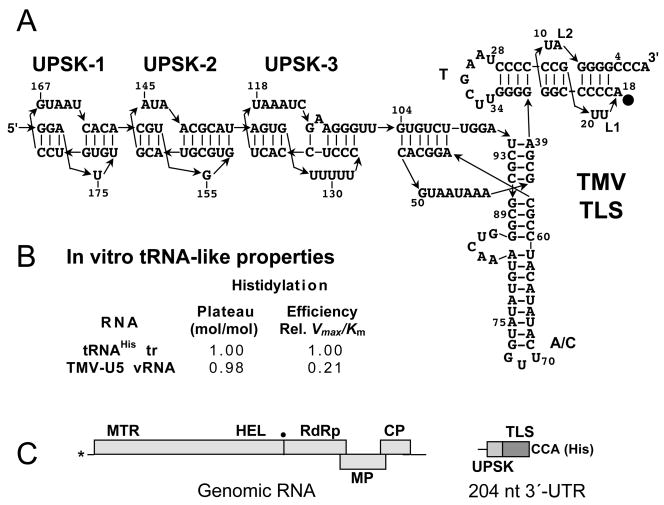Fig. 2. The histidine-specific TMV TLS.
A Sequence and structure of the 104-nt-long TLS of TMV RNA (Rietveld et al., 1984) and the adjacent upstream pseudoknots (UPSK 1–3) (van Belkum et al., 1985). The TMV TLS has obvious acceptor and T stem analogs and an anticodon (A/C) domain with a GUU histidine anticodon; 98-UGGA-95 is thought to serve as a D-loop analog (Felden et al., 1996). Nucleotide A18 in the acceptor stem is thought to be the major histidine identity element (Rudinger et al., 1997). B. Comparison of histidylation efficiency between TMV-U5 RNA and a yeast tRNAHis transcript, determined with yeast HisRS (Felden et al., 1994). C. Diagram of the TMV genome with domains labeled as in Fig. 1. The dot indicates the location of a suppressible stop codon that allows RdRp expression by read-through. The major domains in the 3′-UTR are the TLS and the upstream pseudoknot domain (UPSK). The minus strand promoter overlaps the TLS; the UPSK provides translational enhancement (see text).

